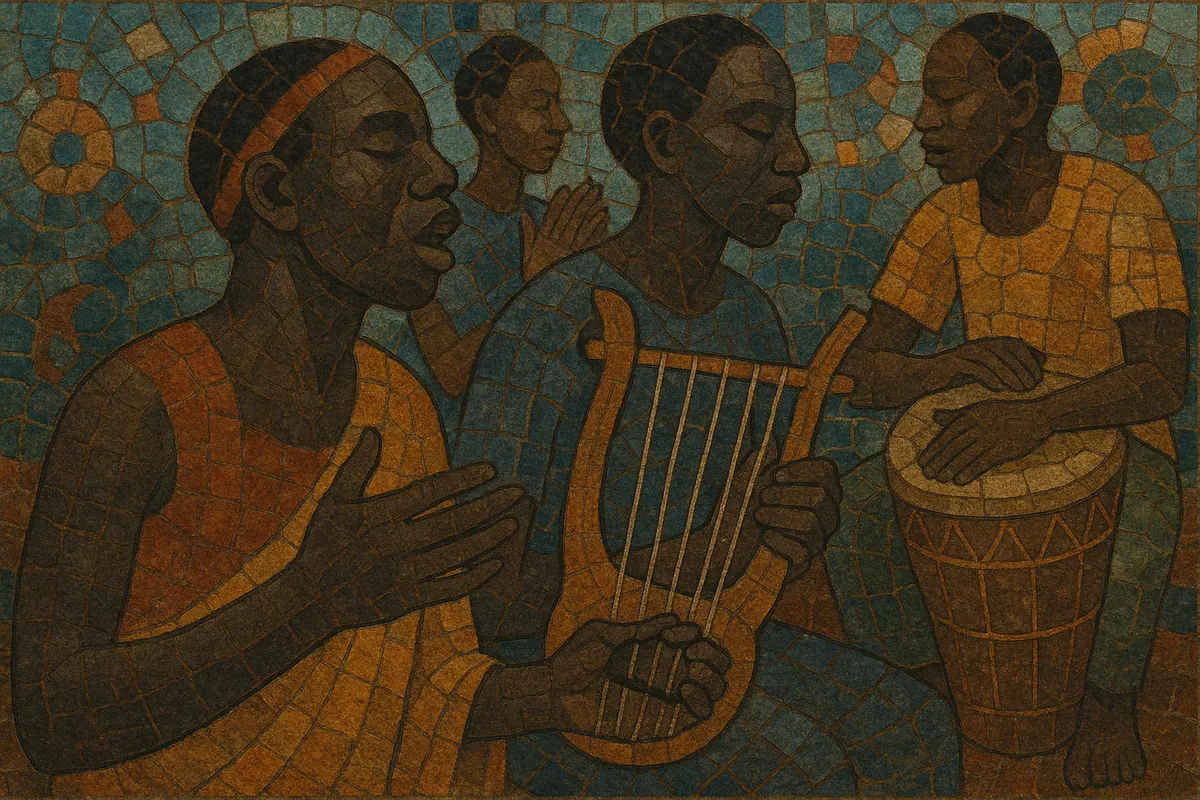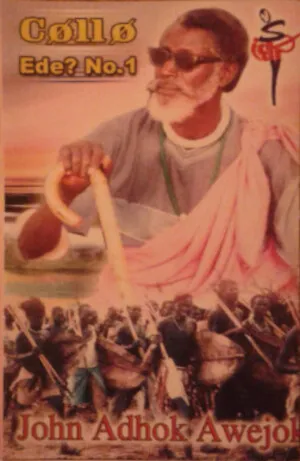Shilluk music is the traditional music of the Shilluk (Chollo) people of the Nile corridor in present‑day South Sudan. It centers on communal singing, ritual praise songs, and dance music tied to agrarian, riverine, and royal life.
Typical performances feature a lead singer (or praise leader) and a responding chorus, handclaps, ululation, and interlocking drum patterns. Melodies are often concise and cyclical, supporting text delivery in the Shilluk language and emphasizing communal participation over solo virtuosity.
Instrumentation is primarily percussive (multiple drums, rattles, clapping) with occasional use of lyres (kissar/tanbūra) and other lute or harp variants adopted through regional exchange. The aesthetic prioritizes responsive rhythms, tightly knit call‑and‑response textures, and texts that commemorate ancestry, kingship, and daily life along the White Nile.
Shilluk music is deeply embedded in the political and spiritual life of the Shilluk Kingdom, which consolidated around the 15th–16th centuries along the White Nile. Music accompanies rites tied to the founding ancestor Nyikang, as well as seasonal labor, fishing, initiation, marriage, and conflict resolution. Praise songs for the reth (king) and other leaders codify history and genealogy, while dance songs strengthen communal identity.
The music has long been transmitted orally by praise leaders, ritual specialists, and village ensembles. Call‑and‑response singing, ululation, and interlocking drum ostinati define the ensemble sound, often in a lilting triple feel (6/8) with cross‑rhythmic clapping. Melodic ranges are moderate and iterative, supporting narrative texts; scales are typically pentatonic or tetratonic, with pitch inflections shaped by vocal delivery rather than fixed temperament.
Proximity to Nilotic and Nubian cultures fostered exchange of instruments (e.g., lyres such as the kissar/tanbūra) and stylistic traits, while contact with Arabic‑speaking traders introduced additional song types and performance contexts. Despite displacement and modernization pressures in the 20th–21st centuries, ceremonial, communal, and church‑adapted Shilluk singing remains a core vehicle for preserving language, lineage memory, and social cohesion.



